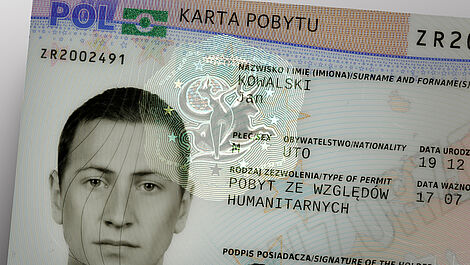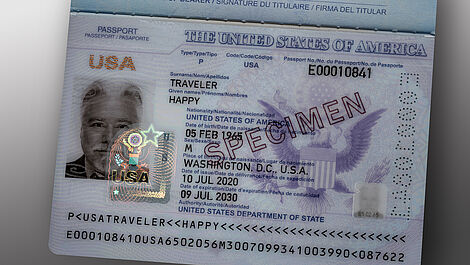- Security holograms are realistic optically variable images created with laser beams, traditionally used for anti-counterfeiting purposes across multiple sectors such as consumer goods, pharmaceuticals, banking and government-issued documents.
- Types of security holograms, including dot matrix or image matrix holograms, provide different optical security levels and can be enhanced using advanced technologies like electron-beam lithography.
- Security holograms help to ensure authenticity and offer effective anti-counterfeiting measures.
- Due to holography being public know-how and commercially available, holograms are vulnerable to counterfeiting. This prompts the need for more advanced DOVID solutions.
- A superior solution is the non-holographic KINEGRAM, that offers higher security through its more complex and strictly protected optical technology.
Producing Complex Holograms with Interference Patterns
How are interference patterns used to produce realistic and complex holograms? The process begins with creating an interference pattern between two coherent laser beams, capturing the light’s phase and intensity. This pattern is then used to create sinusoidal gratings which form the basis for most holographic effects — including detailed and realistic two-dimensional images.
Evolution of Security Hologram Technology
Security holograms have evolved significantly since their inception, moving beyond mere novelty items. For many years, anti-counterfeiting holograms have combined art, technology, and precision engineering to protect brands and ensure product authenticity. These holograms are often used as security labels, making them more difficult for counterfeiters to replicate.
Role of Security Holograms in Industry
Security hologram technology still plays a role in various industries, enhancing security and preventing unauthorized replication. Whether on pharmaceutical goods, cosmetics, brand products, credit cards or tax stamps, holograms provide a robust layer of protection. These more secure holographic technologies should not be confused with holographic displays, which belong to a different category.
Types of Security Holograms
Security holograms can be categorized into several types, each offering distinct characteristics and visual impressions. Here are some of the most commonly used technologies in the realm of security holograms:
- 2D/3D Holograms: These holograms use multiple layers of 2D images to create the illusion of depth. As the viewing angle changes, the images shift, providing a three-dimensional effect.
- Dot Matrix Holograms: Created using lasers to form an array of diffraction points, these holograms typically consist solely of rainbow-like images. They are rarely used for high-security applications such as banknotes or government-issued documents.
- Image Matrix Holograms: Created by demagnifying a micro image onto photo resist plates, which allows one to explore a multitude of holographic effects. They often protect consumer goods and pharmaceuticals.
- E-Beam Holograms (Electron Beam): Produced using electron-beam lithography, these are high-resolution holograms with elevated precision, allowing for intricate microtext and nano-level details that are more difficult to replicate. These high-security applications are often used for banknotes or government-issued documents.
Constraints of Hologram Technology
While holograms are widely recognized for their properties, they are marked by certain limitations - including vulnerability to counterfeiting - and being pixelated on microscopic level. With holography being public know-how and commercially available, there is a need for more advanced solutions when it comes to high-security applications such as banknotes or government-issued identity documents.
In that regard, a globally recognized, more advanced DOVID technology is the non-holographic KINEGRAM by OVD Kinegram, which is based on proprietary and strictly protected know-how. Using vector-based arrangement of highly precise micro- and nanostructures, it provides superior levels of security and makes replication extremely difficult.




